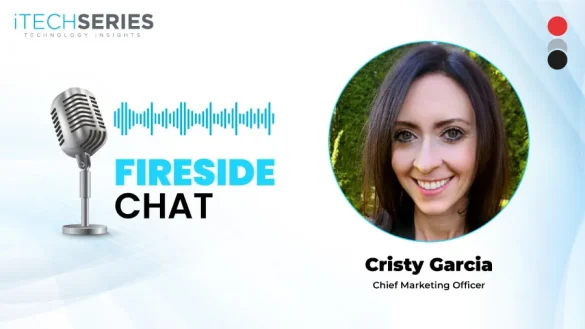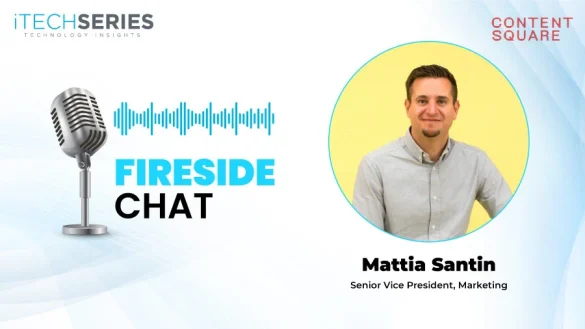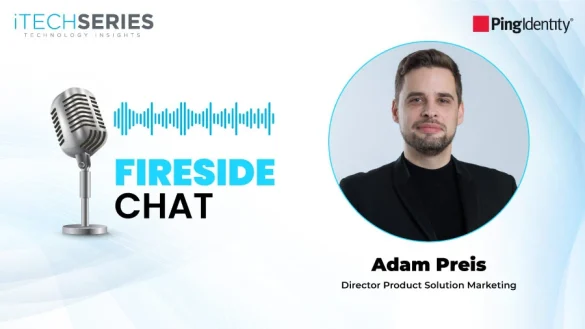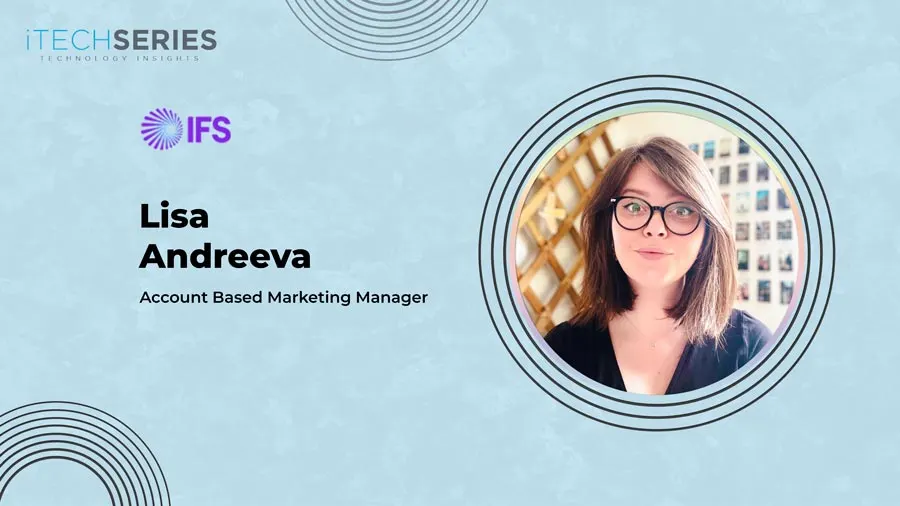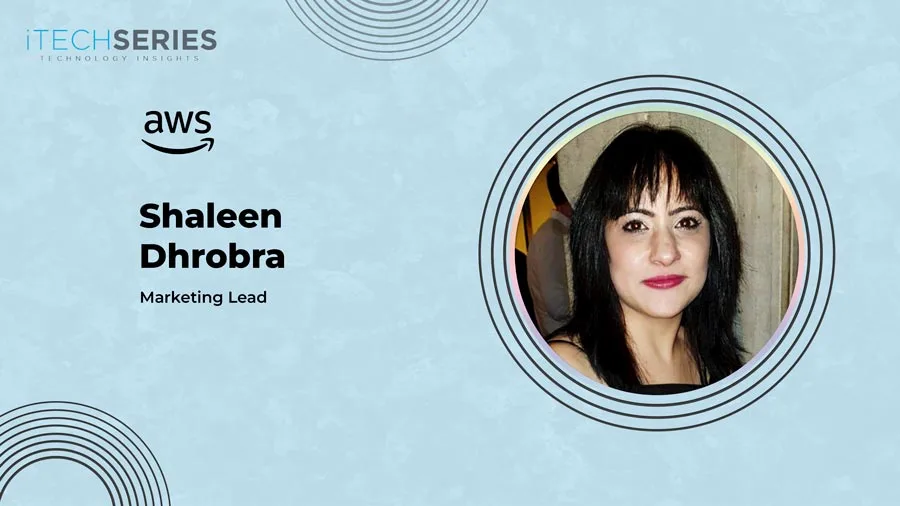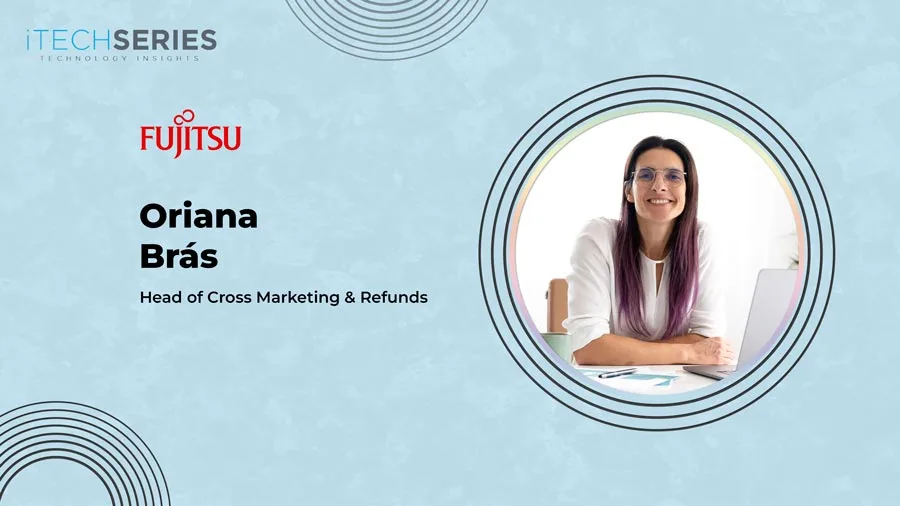Riccardo Sponza, a seasoned global marketing leader, shares his journey across EMEA and APAC, driving brand awareness, demand generation, and customer marketing. He dives into aligning marketing with sales and customer success, leveraging AI and intent data for ABM, and balancing brand-building with pipeline to fuel modern, high-impact GTM strategies.
Welcome to the interview series, Riccardo. Can you tell us about yourself and your journey as a marketing leader?
Firstly, thanks for having me in your series; it’s a real pleasure to have the opportunity to share my thoughts and experience with such a qualified audience. I’ve been involved in Marketing for the last 15+ years, with responsibility in the region for EMEA and APAC in the last 10, covering brand awareness, demand marketing, and customer marketing for different multinational organizations in the Software Industry.
I’ve got the chance to address any kind of market segment, from large Enterprise to Corporate and SMB businesses, either supporting Direct Sales or through our Partner ecosystems, leveraging integrated marketing strategies while targeting different industries.
A common trait across my different experiences has been supporting the transformation to a cloud-based and subscription-based business model, while also transforming the way we were doing marketing, always trying to find the right balance between brand awareness, ABM, digital, and in-person programs.
How has closer alignment between marketing, sales, and customer success reshaped marketing’s responsibilities and priorities?
All three teams need to be tightly aligned to a unique and shared company strategy, with common and connected goals and aligned KPIs that will create a common view on how the organization is performing. Marketing can use very fancy metrics that do not really translate in the Sales world. Lead volumes by channels could be something Marketing uses to better understand how inbound is performing, but in the end, what really matters to Sales – and everyone else – is closing new deals, gaining market share and hitting the revenue goals, often with some quality implications (eg. New Logo capture, high-end SKUs, competitive win),
It should be standard practice to share opportunity pipeline goals between Marketing and Sales. These goals are based on revenue targets and win rates, which determine the required pipeline coverage. Pipeline and revenue goals are then cascaded across teams, each with a defined level of contribution. This is the foundation for any joint Marketing & Sales GTM strategy and guides where to invest Marketing funds. Marketing is responsible for opening new markets, aligned with sales, and further developing mature ones, ensuring brand awareness and demand generation efforts are well executed to maximize ROI. A key intersection between Marketing and Sales is in qualifying inbound opportunities, where Business Development Reps (BDRs) play a critical role.
It’s essential to align on SLAs for lead qualification: how quickly a lead should be processed (e.g., within 15 minutes for a web pricing request), how many contact attempts are made across channels, and the criteria for Sales to accept an opportunity. These are all critical steps in the demand process that require clear priorities, roles, and success metrics. Marketing’s responsibilities don’t end at handing off the opportunity to Sales. Opportunity progression should also involve Marketing, especially when it comes to delivering tailored content by buyer stage or crafting the right experience, whether digitally or in person. This is where ABM programs can add real value, particularly with large accounts or in a 1: few ABM industry model.
What strategies have helped you balance brand building and pipeline generation in a fast-paced, performance-focused environment?
When considering brand awareness, it’s all about building mental availability—that is, making your brand the first to come to mind when your audience is ready to make a decision, as per a definition from LinkedIn. So, we should consider addressing all our Total Addressable Market (TAM) with messages that will establish our brand as a trusted source for a solution they need, affirm our reputation through positive customer references or trusted third-party reviews (eg. Analyst reports, peer review platforms). Depending on the available budget, I would suggest building an emotional campaign, possibly based on video content that we could use and repurpose on different channels and formats (Social Media, YouTube, Commercial TV, our website, blog articles), also involving customers and partners, when appropriate. We should be telling WHY our brand exist, what our purpose is, because this is what a new audience is willing to understand from us. If you want to go deeper, search for Simon Sinek’s work in this area.
Storytelling is super important as well, and I would stress the need to have recognizable spokespersons to show up regularly on relevant Industry press, social media, events, and gain visibility and share of voice. Having a solid PR and social plan is also part of the game here.
Demand generation will only benefit from the brand awareness umbrella messaging we create, funneling that 5-7% of the TAM which is currently in market to engage more on our demand campaigns, make a more educated search on the web, or jump from a peer-review portal to our website to start navigating through our personalized content and then be retargeted on other platforms, to create brand stickiness in their personal feeds. It’s also vital that our content is optimized for SEO and the GenAI LLM platforms (like ChatGPT, Gemini, and the others), which are increasingly used by prospects.
“Marketing is responsible for opening new markets, aligned with sales, and further developing mature ones, ensuring brand awareness and demand generation efforts are well executed to maximize ROI.”
Tell us about the impact of always-on personalized web journeys—how did they influence engagement and conversions?
Implementing an always-on personalized web journey is all about serving the right content at the right moment when needed. You need to have a solid web technology stack to serve a truly personalized web journey, well integrated with your AI-based intent platform, because you need to be able to recognize who is visiting your website in real-time and then decide which content is best to dynamically serve. It usually requires a significant investment in technology and effort, and could be challenging due to shared responsibilities across different teams, so a unified view on how we need to implement it is required. Quite often, we tend to map the buyer’s journey based on what we think should be the best sequence of content to consume, but we all know that prospects can jump from one piece of content to another with very different patterns. So richness of different types of content is one key element of success, linked to clear call-to-actions (CTAs) on the web pages.
Guided product demos, how-to videos, thought leadership content, and customer testimonials are all very engaging marketing assets that educate the prospect and then drive the best conversion into a lead. If you are bold enough not to gate these assets with a form requesting your lead’s data, you will have a higher chance to get high-quality and ready-to-buy leads through pricing or demo request web forms from truly in-market accounts, that will be very much in the Decision buying stage and convert faster into a sale. Don’t forget that everything starts with driving the right audience to your website at the desired volume of visits: A solid media investment aligned with your web journey is key to succeeding with this strategy, leveraging the right paid media channels, paid social content, and retargeting tactics.
Can you walk us through one of the most challenging yet rewarding campaigns you’ve led?
Well, what I described earlier about balancing brand building and pipeline generation is my favorite approach, though it takes longer to execute. Working with a creative agency, crafting the right message, and adding emotional elements is exciting and creative. Aligning internal stakeholders on the campaign format and messaging can be daunting and requires leadership to make things happen. There’s also significant effort in getting testimonial approvals, executive briefings, and involvement while maintaining momentum on content creation. It’s important to define campaign metrics upfront to measure performance. But it’s a lot of fun, and when we see it live, there’s a great sense of team accomplishment. The adrenaline kicks in when performance takes off and good content converts into quality opportunities.
On the other hand, we sometimes implement an “acceleration plan” after getting approval for extra investment to drive demand for a specific product line or region. That’s when execution needs to be fast, typically over 3 to 6 months. In my experience, getting into the market quickly is key, starting by boosting well-performing campaigns and building new ones with fresh content and messaging when needed. One metric I recommend during planning and execution is the Daily Budget Burning Rate. It gives an immediate sense of how much we need to spend daily. Just divide the additional budget by the number of working days. For example, $1M over 6 months (about 110 working days) means spending $9K daily on top of current plans. That might be manageable or challenging, but if early impact is needed, spending more upfront may be necessary. Acting fast is essential. This metric is also useful to create urgency with stakeholders, prioritize investments, and balance initiatives within time limits. The upside is we have more budget to make an impact—generating more demand and revenue—and proving we deserve even more next year.
How have you integrated AI into your marketing tech stack to enhance both inbound and outbound efforts?
In every company I’ve worked for, we used intent data to capture and aggregate buying signals from both internal and external sources. This was combined with propensity-to-buy models using firmographics, engagement data, CRM insights, and other systems. A strong machine learning algorithm powered by high-quality data is essential for segmenting accounts effectively, which then informs ABM programs and outbound strategies. However, one limitation of this method lies in predefined sales territories or GTM strategies, which can restrict our ability to identify and proactively target new accounts, especially those emerging from the “dark funnel.” As defined by 6sense, this refers to early research and decision-making activities that occur before a prospect fills out a form or engages directly with the brand.
Another area is building an AI-based scoring model for inbound leads, going beyond basic scoring from marketing automation platforms. These out-of-the-box models often rely on limited account and individual behavior data. The goal is to develop a 360-degree view of a lead within an account, considering historical engagement and signals from related leads. By using ML regression models and comparing them to previously won deals across similar industries, product fits, or engagement patterns, we can better predict conversion likelihood. This enhances lead prioritization and helps BDRs determine whether to engage directly or use automated nurturing. Regularly refreshing the model based on feedback ensures continuous improvement and better pipeline quality and win rates. A third application is delivering personalized web journeys using platforms like 6sense or Demandbase. These tools enable real-time content personalization based on account data, industry, and buying stage, requiring cross-functional collaboration to implement effectively. Then there’s GenAI, which I’ve actively promoted in my teams. It’s a powerful tool for content creation—summarizing webinars, generating blogs, creating visuals, and more. It boosts productivity, but must be used responsibly to avoid hallucinations, IP issues, or unintentional use of competitor content. Finally, AI enables automation across the qualification process—from personalized emails and nurture streams to web chatbots. Many vendors offer ready-to-integrate solutions. From my experience, piloting these tools before full-scale adoption yields the best outcomes.
Beyond generating leads and driving sales, how would you evaluate the success of a marketing campaign?
Let me start with what we would consider a marketing campaign. If the approach is to design and execute integrated marketing campaigns that will comprise and synchronize Brand Awareness, Demand Generation, Customer Marketing, and Internal Enablement, we need to look at a series of KPIs for each area and see how we are performing. Nonetheless, I believe that we should always look at our business with a high-level view that will give us a general sense of where we are.
My key questions always are: Are we hitting or beating our revenue targets? Are we growing the business? If yes, are we faster than our direct competitors or the market? Are we gaining market share? Are we protecting our install base, minimizing customers’ churn? Are we expanding the adoption in our customer base, leveraging all available opportunities? Do we have the best enablement material for our Sales and Partner Teams? Are we perceived as a trusted provider in our Industry and market?
If we are able to give positive answers to these questions, I would consider it a great success! Otherwise, we need to work hard to get things back on track in one or more areas.
What would be your advice to budding marketing leaders?
I have three areas top of my mind, which are usually my focus areas. Ensure there’s full alignment and clarity on goals and responsibilities with your stakeholders, mainly Sales. Having agreed priorities and plans is essential to start right. It doesn’t make sense to generate demand where there’s no sales coverage: you will only do a favor to your competitors, stimulating a need you cannot serve. And if you still carry some targets, declare your reds in advance. You will save money to repurpose in more strategic areas. I know it’s a bold decision to take and communicate.
We have gone through significant transformations in the last years, and we could expect further accelerations due to the pervasive adoption of AI across everything we do in Marketing and Sales. We need to be on top of what is happening in our industry, be eager to learn new practices and technologies to continue to drive innovation, and support our company goals. If you are killed by your day-by-day duties, reports, and meetings, you could be at risk – I’ve been there as well. It’s time to revisit your agenda and carve out time to learn more, network with peers, and stay current.
People in your team are the best asset you have, but they could suffer as well from their daily routine. Helping them with their individual development plan and securing learning opportunities and resources will pay dividends and support the whole team to grow and adapt to changes. There’s a plethora of great material and learning paths available for free from vendors and online providers that can be leveraged on demand, if the training budget is a constraint. As leaders, we need to make this happen, always creating space for our people to thrive and grow to their full potential.
About Riccardo Sponza
Riccardo is a passionate digital innovator and strategic marketing leader with deep expertise in driving SaaS growth, ABM, and integrated demand generation. He has led high-impact digital campaigns, managed acquisitions, and accelerated market share across competitive industries. Known for building high-performing, diverse teams, Riccardo thrives in multicultural environments and champions innovation, customer-centricity, and talent development. Fluent in English and Italian, he excels at cross-functional collaboration and stakeholder engagement.


